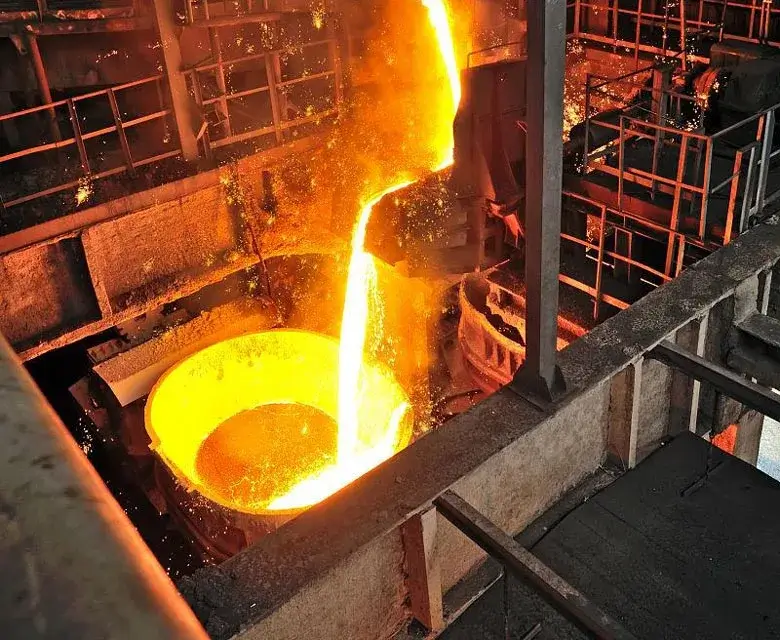In the chemical industry, metallurgy, environmental protection and other highly corrosive industrial fields, acid-resistant refractory castables as a key lining material, its performance is directly related to equipment life and production safety. This paper starts from the principle of material science, combines with engineering practice, systematically elaborates the configuration technology of acid-resistant refractory castables, and provides practitioners with both professional and operational technical guidelines.
1.Material System Construction: A Balanced Philosophy of Acid Resistance and Fire Resistance
The central challenge for acid-resistant refractory castables is the simultaneous resistance to acid attack and high-temperature damage. The material system needs to fulfill three basic requirements:
Selection of main components: SiO₂-Al₂O₃ texture system as the skeleton, in which silica fume (containing SiO₂ ≥ 92%) provides the dense network structure, and alumina clinker (Al₂O₃ content of 75%-85%) enhances the high-temperature stability.
Acid-resistant additives: Phosphate (e.g. Al(H₂PO₄)₃) or silica sol (SiO₂-nH₂O) is introduced as a binding agent, which forms a dense Si-O-P or Si-O-Si protective film on the surface of the material, blocking the path of H+ penetration.
Aggregate grading optimization: adopt “three-stage proportioning method”, i.e. 40%-50% for coarse aggregate (5-3mm), 30%-35% for medium aggregate (3-1mm), 15%-20% for fine powder (≤0.088mm), and verify the D50 value in the range of 8-12 μm through the laser particle size analyzer, so as to ensure that the stacking Density ≥2.65g/cm³.
2.Formulation Design: Technology Transformation from Laboratory to Industrialization
Typical formula design needs to follow the “3+2+1” principle:
3 types of basic raw materials: refractory aggregate (60-70%), refractory powder (15-20%), binding agent (8-12%).
2 types of functional additives: plasticizers (such as methyl cellulose, 0.2-0.5%) to improve the construction performance, explosion-proof agent (such as organic fibers, 0.1-0.3%) to control baking cracks.
Class 1 acid-resistant components: selected according to the characteristics of the medium, such as sulfuric acid environment needs to increase the content of ZrO₂ to 8% -10%, hydrochloric acid environment is preferred SiC (6% -8%).
3.Preparation process: full process control from mixing to maintenance
Pre-mixing stage: use forced mixer, dry mix aggregate and powder first for 3-5 minutes to ensure uniform distribution of SiO₂ and Al₂O₃.
Binding agent addition: Add aluminum phosphate solution in three times, each time 1 minute interval, to avoid local gelation.
Vacuum treatment: defoam under -0.095MPa vacuum environment for 5 minutes to eliminate microscopic air holes.
Molding process: recommended vibration casting method, vibration frequency control at 2800-3200 times / min, duration to the surface of the slurry shall prevail.
Maintenance system: adopt “three-stage maintenance method”, i.e. 25℃ moisturizing maintenance for 24h → 110℃ drying for 12h → 600℃ heat treatment for 4h, to ensure that the phosphate binding phase is fully transformed.
4.Performance optimization: from lab testing to field validation
Key performance index:
Acid resistance (GB/T 17601-2008): ≥98.5%
Apparent porosity: ≤18
Flexural strength after drying at 110℃: ≥8MPa
Strength retention rate after heat treatment at 1000℃×3h: ≥85
Failure mode prevention and control
Corrosion cracking: by adding TiO₂ (2-3%) to form Ti-Si-O protective layer to inhibit H+ penetration.
Structural spalling: using fiber reinforcement technology to build a three-dimensional mesh structure in the matrix to enhance the fracture energy.
5.Technology Development Trends
Nano-modified technology: Introducing nano-SiO₂ (particle size 20-50nm) through sol-gel method, the strength at room temperature is increased by 40%, and the drying strength at 110℃ exceeds 12MPa.
No-bake technology: develop calcium aluminate cement-phosphate composite bonding system to realize the strength of ≥5MPa after 24h of natural curing and shorten the construction period by 60%.
3D printing suitability: Optimize particle size gradation and rheological properties, so that the castables meet the printing requirements of extrusion pressure ≤ 0.3MPa and open time ≥ 60min.
The configuration of acid-resistant refractory castables is the deep integration of material science and engineering practice. Through accurate material selection, scientific formula design and strict process control, high-performance products can be prepared to meet the demands of complex working conditions. With the integration of nanotechnology, 3D printing and other cutting-edge technologies, the field is accelerating its evolution in the direction of intelligence and functionalization, providing a more reliable protective barrier for industrial equipment.

